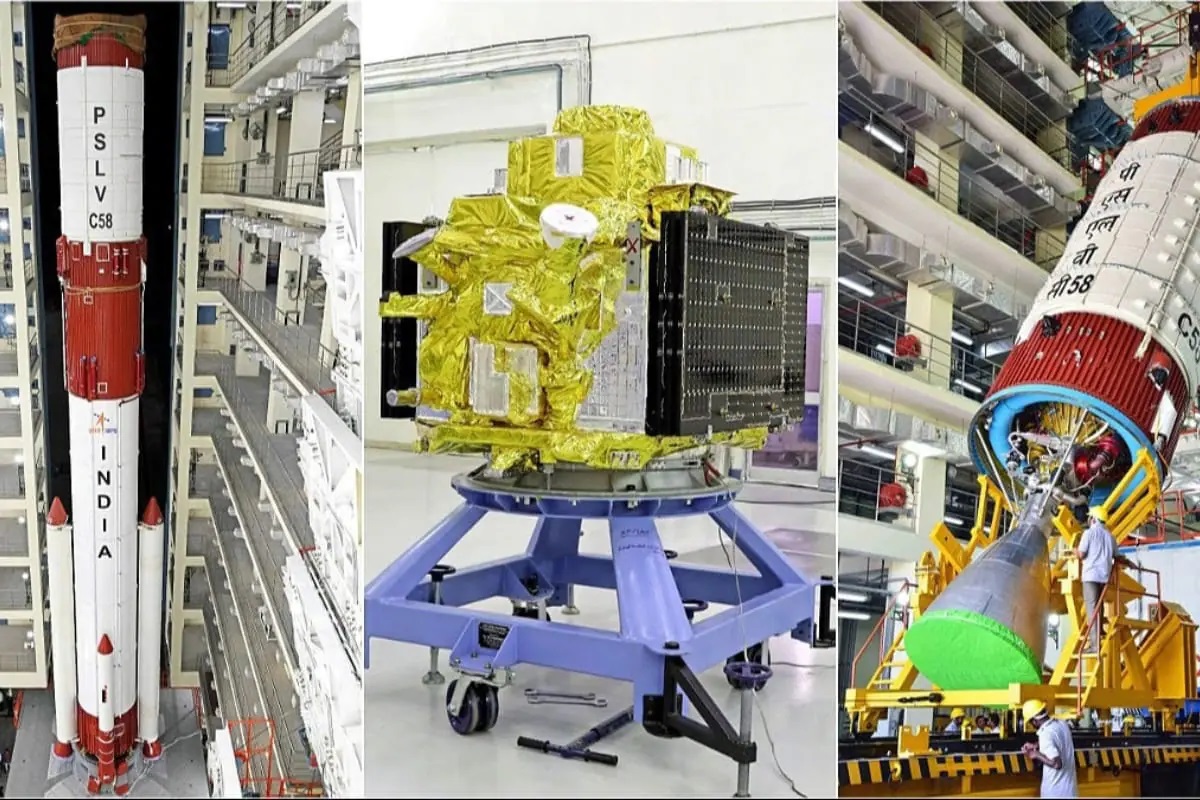
XPoSat Mission

02-01-2024
XPoSat Mission
|
For Prelims: Polarization of X-rays(Sources that emit polarized X-rays)( Polarization measurements) , key Points, About X-ray Polarimeter Satellite (XPoSat), Scientific payloads onboard XPoSat For the Mains paper : Significance of XPoSat Mission, How does XPoSat compare with X-ray experiments or missions globally? |
Why in the news?
Indian Space Research Organisation (ISRO) put its first polarimetry mission X-ray Polarimeter Satellite (XPoSat) on January 1.
Key Points
- ISRO's PSLV-C58 has launched XPOSAT Satellite.
- XPoSat is the world’s second satellite-based mission dedicated to making X-ray polarimetry measurements.
About Polarization of X-rays
- X-rays comprise electric and magnetic waves that are constantly in motion. Being sinusoidal waves, they do not follow a patterned direction of motion.
- Whereas, a polarized X-ray is both organized and has two waves vibrating in the same direction.
Sources that emit polarized X-rays
- When magnetars or black holes emit X-rays, they encounter a wide variety of materials in the Universe.
- As X-rays pass through the thick cloud of materials, the electric component of the X-ray emits a photon in a changed direction, as it has now undergone scattering.
- In the process, the new photon has got polarised in a direction perpendicular to the plane formed between the original and scattered photon.
Polarization measurements
- The polarization measurements – angular and degree of polarization – are believed to provide clues about:
■The bright X-ray emitting sources the nature of these radiations and
the complex process they undergo.
■X-ray Polarimeter Satellite (XPoSat)
About X-ray Polarimeter Satellite (XPoSat)
- It is the first dedicated satellite from ISRO to carry out research in space-based polarisation measurements of X-ray emission from celestial sources.
- It is designated for observation from low earth orbit (~ 650 km, low inclination of ~ 6 degree).
- It has an estimated mission life of about five years during which XPoSat will observe sources that emit polarised X-rays.
- The observations will be done when the magnetars or neutron stars (they are highly magnetic and display a wide array of X-ray activity) are in transit through the Earth’s shadow, for instance, during the eclipse period.
Scientific payloads onboard XPoSat
- XPoSat comprises two payloads, including Indian X-ray Polarimeter (POLIX) and X-ray Spectroscopy and Timing (XSPECT).
- They have been built by Raman Research Institute and UR Rao Satellite Centre, both located in Bengaluru.
POLIX:
- It is the world’s first instrument designed to operate in the medium X-ray of 8 to 30 kilo electron Volt (keV) energy band.
- It comprises a collimator, which is the key component to filter light originating from bright sources in the field of view.
- Moreover, there is a scatterer consisting of four X-ray proportional counter detectors (that prevent the trapped light from escaping).
- It will observe a few tens of astronomical sources. It was conceived, designed, and built at RRI.
XSPECT:
- It is designed to conduct fast timing and high spectroscopic resolution in a soft X-ray energy band (0.8-15 keV).
- It will observe a variety of sources like X-ray pulsars, black hole binaries, low-magnetic field neutron stars, active galactic nuclei or AGNs and magnetars.
- AGNs are a compact region at the centre of a galaxy that emits a significant amount of energy across the electromagnetic spectrum.
Significance of XPoSat Mission
X-ray polarization measurements in medium energy bands for the first time
○So far, polarization of celestial sources was done either in the optical or radio bands.
○XPoSat, however, will facilitate X-ray polarization measurements possible from bright sources, that too, in the medium energy band (8-30 keV) energy range.
- This has never been attempted ever before.
Analyze two kinds of sources
- XPoSat will observe two kinds of sources — persistent sources (targeted and known sources) and transient sources (pulsars, active galactic nuclei, magnetars).
Nature of the radiations and the multitudes of processes involved can be analyzed
- Out in space, X-rays get polarised due to multiple causes.
■For example, X-rays when subject to strong magnetic fields or due to the interactions with material present around black holes.
- With the help of XPoSat, scientists can now probe the nature of the radiations and the multitudes of processes involved in the generation of these radiations.
Will aid the researchers by analysing the additional parameters
- POLIX will undertake important measurements like the degree and angle of polarisation of X-ray photons from various potential sources.
- These two additional parameters, along with the spectrographic, timing and imaging data, will aid researchers to overall improve the present understanding of the celestial bodies.
How does XPoSat compare with X-ray experiments or missions globally?
- Indian astronomers, using AstroSat performed timing and broadband spectroscopy of X-ray sources but no polarisation studies were performed.
- AstroSat is India’s first astronomy-based space missions that was launched in September 2015.
- The lack of development of highly sensitive and precise instruments makes missions for polarisation measurements of X-rays extremely challenging.
- In 2021, NASA launched Imaging X-ray Polarimetry Explorer (IXPE).
- It has been designed to operate and perform X-ray polarisation measurements within the soft X-ray band (2 to 8 keV energy band).
- Besides complementing IXPE, XPoSat’s payload POLIX will offer an expanded observational energy band, as it is designated to perform X-ray polarisation in the medium X-ray band (8 to 30keV).
Source:Indian Express